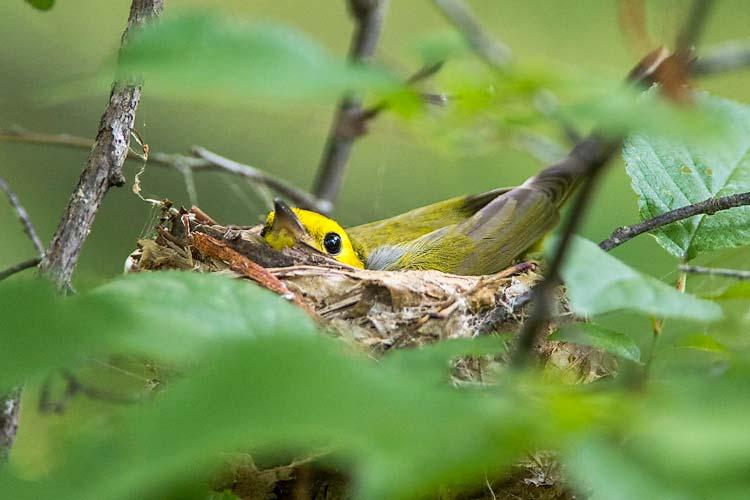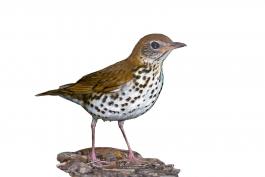In the heart of the Ozarks, where the Black, Current, and Eleven Point rivers dissect steep, forested hillsides, lies the Missouri Ozark Forest Ecosystem Project (MOFEP), one of the most comprehensive forest management studies in North America. It can be difficult to imagine that just a few generations ago, this area looked entirely different. The forests in Missouri were in bad shape.
From the 1890s through the 1920s, exploitive timber harvesting removed much of the trees. What remained was a degraded landscape, largely denuded of wildlife, plants, soils, and nutrients — essential components of a forested ecosystem.
The nine study sites of MOFEP are located in Shannon, Reynolds, and Carter counties in the heavily forested Ozarks of southeastern Missouri. Since that time, our beautiful Missouri forests, once nearly vanished because of overuse, now cover more than 15 million acres due to improved conservation practices. Land cleared at the turn of the century has regenerated and now supports many uses. But the sustainable use of our forests will require a deep understanding of the effects that tree harvesting has on the ecosystem.
MOFEP is Born
In the 1980s, wildlife biologists became concerned about the effects of tree harvesting on migratory songbirds. In areas of the Midwest where forests were fragmented into small patches, bird researchers were seeing increased nest parasitism by brown-headed cowbirds and reduced nest success of summer breeding birds. They wondered if birds were facing the same problems in parts of Missouri where timber harvests occurred in extensive and contiguous forests. Foresters were also facing questions of their own. How can they best manage forests to provide wood products as well as benefit wildlife, provide for public recreation, and keep forests healthy well into the future?
To answer these questions, biologists and foresters from MDC, together with many other collaborators, designed a 100-year study, called MOFEP.
One of the first challenges was to find the best location for the project. They wanted MOFEP to be on state-owned land and on forests that had not been cut in at least 40 years. The answer was found in the heavily forested Ozarks in southeastern Missouri. Nine study sites, each about 1,000 acres, are located on the Current River Conservation Area in Shannon and Reynolds counties and the Peck Ranch Conservation Area in Carter County.
Three Forest Management Systems
A century ago, timber harvesting was primarily exploitive. Loggers cut all they could to fill human needs and wants, with little regard for future generations or ecosystem health. A positive shift occurred in recent generations. Now our forests are managed to benefit trees and soft-stemmed plants, game and nongame animals, while providing wood resources and economic sustainability to local communities.
MOFEP tests three common types of forest management — even-aged management, uneven-aged management, and no harvesting. Uneven-aged sites are made up of a mixture of tree ages, while even-aged sites are more of a patchwork with trees of similar ages grouped together.
In the even-aged system, trees are cut using two methods, thinning and regeneration harvests. Thinning removes smaller or unhealthy trees to give more growing space to the healthiest trees, and a regeneration harvest removes most trees on a 10-15 acre area. With the uneven-aged system, foresters select scattered individual trees or small groups of trees to cut. In no-harvest management, the forest is left alone to grow and mature naturally without intervention. Trees will die of natural causes, but are not cut down. Monitoring uncut forests provides a comparison of how the forest changes naturally to how it changes after tree harvesting.
By putting the three forest management systems into action in a controlled way, researchers observe the effects of forest management on different components of the ecosystem.
Projects and Findings
Overstory Tree Project
Thousands of trees are measured on 648 plots scattered across the sites. Researchers record the species name and size of each tree growing within the plots. This data helps scientists understand how the density, size, growth rate, and reproduction of trees may change under different forest management systems.
Oaks and hickories are the dominant tree species in the Ozarks. After dying naturally or being cut down, oaks and hickories make use of the resources left in the root system to send up stump sprouts. They are vigorous stump sprouters, so foresters do not have to replant trees after a harvest. Through seeds and sprouts, these trees replant themselves. Many sprouts form at first, but usually only one or two become full grown, mature trees.
Oak trees are the most common and are important species for deer, turkey, and humans. Early results show that over time, even-aged management may favor scarlet and black oaks, while white and post oaks may be more abundant in uneven-aged management.
Ground Flora
While trees by definition are the dominant part of forests, most of the plant diversity is on the ground layer.
Botanists on MOFEP have documented over 500 species, including grasses and sedges, forbs, ferns, vines, shrubs, and tree seedlings. Their close observations led to new discoveries of populations of two rare species — heart-leaved tragia and Reznicek’s sedge.
Ground flora diversity increased in even-aged and uneven-aged sites after harvests, due to increased sunlight reaching the forest floor. A positive outcome was the increase in woodland indicator species like native tick-trefoils, asters, and goldenrods. But nonnative invasive species, such as Japanese stiltgrass and tree-of-heaven, were encountered more often in harvested areas and are a cause for concern because they crowd out native species and don’t contribute to wildlife forage as well as native plants.
Where larger groups of trees are cut, grapevines and blackberry shrubs flourish for about 10 years, before the young trees begin adding too much shade. The dense young stand of trees casts lots of low, deep shade, stunting the growth of ground plants for a number of years until the new forest thins out through natural mortality.
Songbirds
Songbird plumage can be colorful and gorgeous to look at, but expert bird researchers probably use their ears more than their eyes. They identify bird species by their songs and are able to estimate species population densities.
They have also monitored nests and used mist netting to capture and band birds. Paul Porneluzi, professor of biology at Central Methodist University, has worked with the MOFEP songbird project for many years.
“In order to provide the best habitat for the greatest number of bird species,we likely need a mix of all types of forest management,” Porneluzi said.
The most abundant songbird species are categorized into two groups — mature-forest species and early-successional species. Mature-forest species, such as the ovenbird, worm-eating warbler, and wood thrush, are a lot less abundant on MOFEP sites after tree harvesting. They continue to breed on sites where trees are harvested, but are most abundant on uncut sites.
Early-successional species, such as the indigo bunting, yellow-breasted chat, and hooded warbler, depend on the shrubby habitat after a harvest. They increased in density up to five to seven years after harvest, then decreased as the forest grew denser.
Even though cowbirds are common in the Ozarks, less than 5 percent of songbird nests are parasitized. And nest parasitism by cowbirds did not increase after harvest.
Small Mammals
Small mammals, like the white-footed mouse, eastern chipmunk, and southeastern shrew, play an important role in the forest ecosystem. Their activities disperse plant seeds and fungi spores, and through tunneling, they aerate and mix the soil. They eat lots of insects, and in turn they are prey for larger animals like snakes and owls.
To capture and count these wily critters, researchers have to be creative. They use live traps baited with an enticing mixture of peanut butter and rolled oats. Small mammals find cover from predators in the dense plant growth and downed wood left on site after tree harvesting. Their populations gradually increased in even-aged sites up to five years after the harvest.
Reptiles and Amphibians
Amphibians (salamanders, frogs, and toads) and reptiles (turtles, lizards, and snakes) play important roles in the function of forest ecosystems. As both predators and prey to other animals, they are links in forest floor food webs. Over 40 species have been recorded on MOFEP so far.
Researchers use live traps to capture amphibians and reptiles. A barrier called a drift fence, which is a piece of aluminum sheeting placed vertically into the ground, blocks the animal’s path and guides it into a pitfall or funnel trap. A researcher checks the traps daily, records data about the animal type, sex, and size, and releases it unharmed.
Amphibians prefer moist and shady habitats, so populations of some species declined after cutting in both even-aged and uneven-aged sites. It took more than a decade for them to return to pretreatment capture rates in harvested stands. Lizards showed an opposite response to timber harvests — they were more abundant in the open and sunny habitat created after harvests on even-aged sites. Different species of snakes responded differently to forest management, with a majority of species increasing in abundance after harvest.
Shelby Timm, resource staff scientist with MDC, says MOFEP is important because it is “designed to explore population changes over a large area. Overall, we found that few amphibian and reptile populations change when looking across the entire site. If we only looked at stand-level impacts, we wouldn’t have the whole picture.”
Collaboration is Key
Making MOFEP a success requires the service and commitment of biologists from across the entire state. This 100-year project would not be possible if not for the cooperation of researchers from many conservation agencies and universities. Hundreds of students and recent graduates have worked on MOFEP and this valuable experience helped launch their careers.
MOFEP is breaking new ground by providing important information on different components of forest ecosystems, on a landscape scale, and over a long timeframe. MOFEP will provide the knowledge necessary to decide the best ways to ensure the survival of healthy forest ecosystems, while continuing to provide wood resources and support local timber industry.




















Also In This Issue


And More...
This Issue's Staff
Associate Editor - Bonnie Chasteen
Staff Writer - Larry Archer
Staff Writer - Heather Feeler
Staff Writer - Kristie Hilgedick
Staff Writer - Joe Jerek
Creative Director - Stephanie Thurber
Art Director - Cliff White
Designer - Les Fortenberry
Designer - Marci Porter
Photographer - Noppadol Paothong
Photographer - David Stonner
Circulation - Laura Scheuler






















